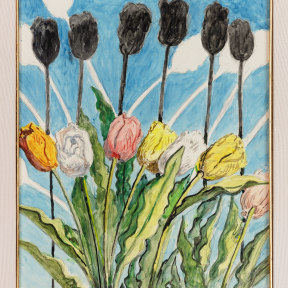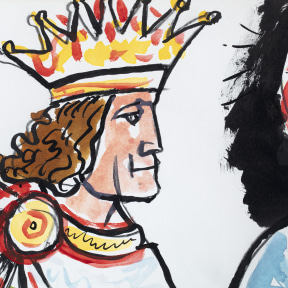-
Biography
Carlo Carrà (Quargnento, Italy 1881- Milan, Italy 1966)
Born in 1881 in Quargnento, in the province of Alessandria, he soon moved to Milan to begin his training. He attended a decorative painting course at an evening school for applied arts at the Sforzesco Castle, then at the Brera Academy, where he met Romolo Romani and Umberto Boccioni.
In 1910, through Boccioni and Russolo, Carrà met Marinetti, and joined the Futurist movement, signing the Manifesto of Futurist Painters.
From 1911 to 1914 he lived in Paris, where he met Picasso, Braque and Apollinaire, as well as experiencing the French painting of Courbet and Cézanne, driving his interest in Cubism.
Between 1914 and 1915, his taste for Cubism combined with a focus on Italian art from the fourteenth and fifteenth centuries, which later proved fundamental for a progressive simplification of form, creating space to explore the metaphysical.
His encounter with de Chirico and Savinio in 1916, while on military service in Ferrara, solidified his interest in metaphysical painting, with a particular interest in to the volumetric layout of compositions.
In 1919, with Mario Broglio, he led the group Plastic Values and, in 1926, he joined the Nine Hundred group of painters linked to art critic Margherita Sarfatti.
In the 1920s, his paintings were characterised by a focus on nature and the artist's desire to “remove objects from their context, simplifying them to give them an absolute value”.
He exhibited at the Venice Biennale in 1922, 1926 and 1928, when he was given a solo exhibition of 14 artworks.
In 1931, he won the Painting Prize of the National Art Quadriennale in Rome and, two years later, he signed the Mural Manifesto of Sironi, creating murals for the Milan Triennale in the Justice Palace.
His fame was undisputed when, in 1942, the Brera Pinacoteca dedicated an exhibition to him and, in 1950, he won the Grand Prize at the Venice Biennale. In 1962, he held a major retrospective at the Palazzo Reale of Milan.
He died in Milan in 1966.
Copyright the artist. Photo UniCredit Group (Sebastiano Pellion di Persano)
-
Works







